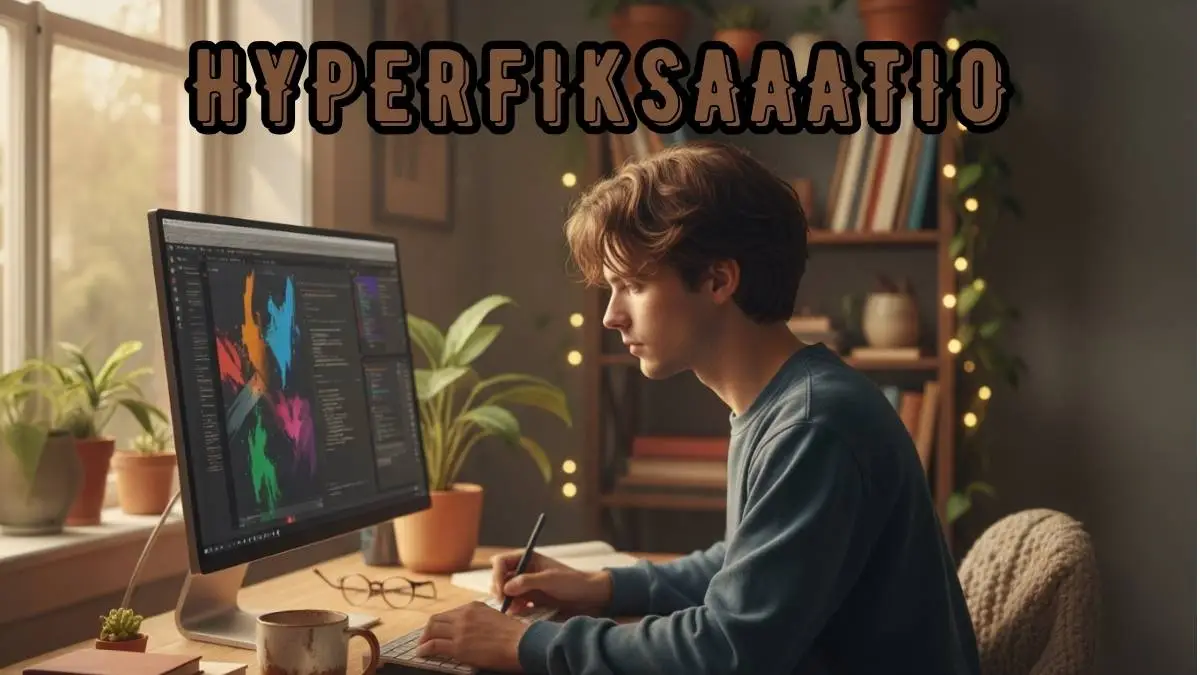Hyperfiksaatio, a Finnish term meaning hyperfixation, describes an intense, consuming form of attention that can last for hours or even days. More than simple interest, it represents a fusion of brilliance and vulnerability, where passion can easily tip into obsession. As awareness of neurodiversity grows, understanding hyperfiksaatio offers insight into how uniquely different minds engage with creativity, learning, and purpose.
Table of Contents
The Psychology of Hyperfiksaatio
Hyperfiksaatio emerges from the complex dance between motivation, emotion, and brain chemistry. It begins when deep interest activates the brain’s reward pathways, flooding focus with dopamine-fueled satisfaction. This can nurture creativity and persistence, but when unchecked, it blurs into compulsion. The mind becomes locked in its own reward loop, finding it difficult to let go. Understanding this balance helps distinguish passionate engagement from unhealthy fixation.
For example, a person with ADHD might begin coding or working on digital art, and hours pass unnoticed. They may skip meals, ignore messages, or lose awareness of time, even if they originally intended a short session. This depth of immersion exemplifies ADHD hyperfixation.
Hyperfiksaatio vs. Normal Interest: Where’s the Line?
At face value, intense interest and Intense concentration feel similar, but they diverge on duration, intensity, and emotional dependence.
| Feature | Normal Interest / Hobby | Hyperfiksaatio |
| Duration | Hours to days, fades naturally | Days, weeks, or longer; may persist |
| Control | Easily shifted to other tasks | Hard to disengage even when needed |
| Emotional tone | Pleasant and voluntary | Sometimes compulsive or anxiety-driven |
| Life impact | Enriches life without major cost | Potential neglect of obligations or relationships |
What Causes Hyperfiksaatio in the Brain?
- Dopamine Imbalance:
Irregular dopamine activity affects reward sensitivity and motivation, making it harder for individuals, especially those with ADHD, to regulate deep focus or shift attention easily.
- Executive Dysfunction:
Weakness in executive functions such as planning, shifting tasks, and inhibitory control can trap attention on one activity for prolonged periods.
- Altered Neural Connectivity:
Differences in brain network connectivity, particularly in resting-state patterns, may promote rigid or repetitive focus behaviors.
- Emotional and Sensory Regulation:
It can serve as a coping mechanism, offering emotional stability or sensory calm when a person feels overstimulated or distracted.
- Reward Loop Reinforcement:
Repeated dopamine release during engaging activities reinforces the cycle of fixation, making disengagement increasingly difficult.
When Hyperfiksaatio Becomes Problematic
- Disrupted Routines: Individuals may skip meals, lose sleep, or neglect hygiene and responsibilities like chores or bills.
- Perceptual Distortion: Time feels compressed, hours pass unnoticed, leading to confusion or difficulty returning to regular tasks.
- Emotional and Psychological Toll: Feelings of guilt, anxiety, or frustration often follow once the imbalance is recognized, impacting self-esteem and relationships.
- Academic or Work Strain: Overfocus on one project or topic can harm performance in other areas, creating stress or burnout.
- Blurred Boundary: The line between productive passion and harmful obsession is subtle, making self-awareness and balance essential.
Positive Sides of Hyperfiksaatio

- Deep Learning and Expertise: Sustained focus enables mastery of complex or niche subjects, helping individuals achieve specialized skills or high productivity in short periods.
- Creative Innovation: Intense concentration fosters originality, allowing people to explore unconventional ideas and make unique discoveries.
- Enhanced Productivity: When aligned with meaningful goals, it’s can lead to exceptional work output and attention to detail.
- Organizational Advantages: Workplaces and schools can harness hyperfixation by offering “focus windows,” task alignment, and mentorship to channel energy effectively.
- Neurodiversity Strength: When supported and balanced, it exemplifies how diverse cognitive patterns can enrich creativity, problem-solving, and innovation.
Managing Its Without Losing Balance
- Scheduled breaks & reminders: Use timers or alarms to prompt transitions.
- Body doubling / external accountability: Working in presence of another to help with transitions. (Emerging VR body doubling study supports this for ADHD)
- Boundary setting: Pre-define limits, time, money, or resource ceilings.
- Cognitive Behavioral Therapy (CBT): Techniques to identify cognitive distortions, shift focus, and build coping flexibility.
- Mindfulness and transition rituals: Practices to anchor awareness and ease out of absorption.
Digital tools (apps that lock you out after time, visual timers, Pomodoro techniques) or mindfulness reminders can help in bridging deep focus with daily rhythm.
The Role of Society and Awareness
Society plays a vital role in reshaping how hyperfiksaatio is perceived and supported. By promoting awareness and education about neurodiverse focus patterns, communities can replace stigma with understanding. Inclusive practices in schools and workplaces help individuals use their deep focus constructively. Greater awareness fosters empathy, balance, and acceptance for all cognitive styles.
FAQs
1. Is hyperfiksaatio the same as hyperfocus?
No,it’s lasts longer and is more emotionally immersive, while hyperfocus is short-term, intense concentration.
2. Can people without ADHD experience hyperfiksaatio?
Yes, anyone can experience it, though it’s more common in ADHD or autism due to unique focus patterns.
3. Is hyperfiksaatio always negative?
Not necessarily, when balanced, it can enhance creativity and productivity instead of causing harm.
CONCLUSION
Hyperfiksaatio reveals the fine line between passion and exhaustion. It can drive remarkable creativity and mastery, yet also blur boundaries of rest and connection. By fostering awareness and supportive environments, society can help individuals channel this focus productively. When understood, hyperfiksaatio becomes not a burden, but a bridge to meaningful achievement.


